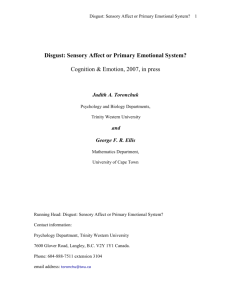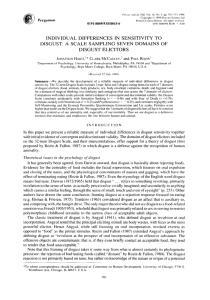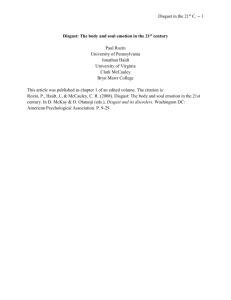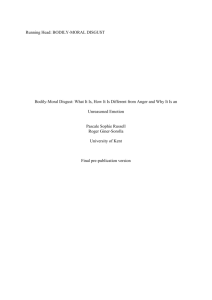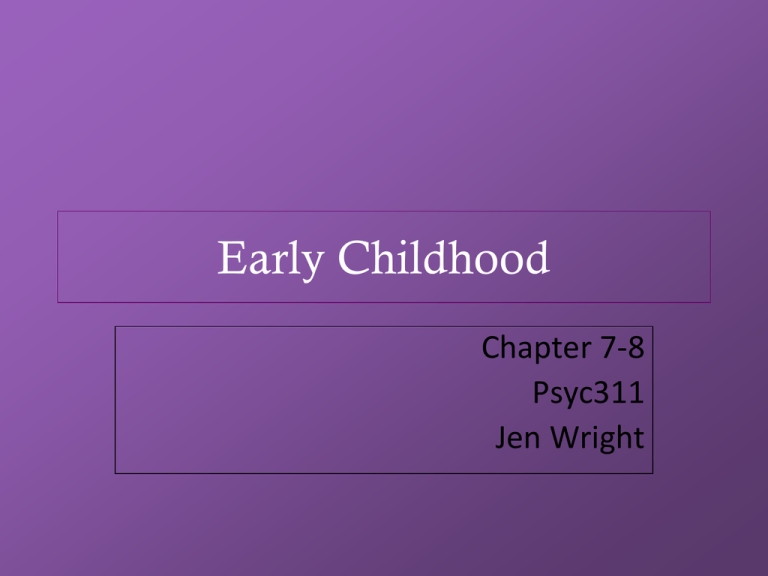
Early Childhood
Chapter 7-8
Psyc311
Jen Wright
body development
• Eating habits
• 2-6 year olds eat less than infants and older
children.
• “Just right” phenomenon – picky eaters!
– Like: salty/sweet foods
– Dislike: bitter/sour foods
• Learning what is appropriate and not
appropriate to eat
• Early signs of disgust
– Infants show “disgust” facial expression
– Strong food preferences
role of disgust
• Protection against dangerous substances
– Poisonous foods often bitter
– Rotten foods often sour
– Disgust expression functions as warning
• Protection against contamination
– Children not sensitive to contamination until early
childhood
• Protection against deformity and disease
role of disgust
• Higher-order disgust
• Physical contamination social
contamination
– 7-8 year olds “cooties”
• Physical contamination moral
contamination
• Examples?
obesity
• Early signs of obesity as young as 2 years old
• Obesity rates among 2- to 5-year-olds
– rose to 14% for the years 2003-2006
– compared with 5% in 1980
• Need less food than did as an infant
– Problem for forcing child to “clean their plate”
– Especially w/ desert as an incentive!
• Attraction to salty and sweet foods
• Other contributors?
consequences
• Type II diabetes
– 50% of some children in low-income areas
– http://www.youtube.com/watch?v=Rutaw8OJ9Wo
• Bone development problems
– Stunted hip/leg bone growth
•
•
•
•
Cardiovascular disease
HBP, High cholesterol
Lower IQ
Obesity programs for toddlers?
– http://abcnews.go.com/Health/Story?id=5602922&page=1
developing cognitive skills
• Memory development
– Still better memory for content than context
• No memory of when/where something is learned
• Increase in “executive function”
• Impulse control
• Delayed gratification
• Perseverance
• http://www.youtube.com/watch?v=6EjJsPylEOY
• Ability to override current intentions given new
information
• Color/shape card sorting game
sort by color
sort by shape
• What is the driving force behind this
development?
• Brain maturation
– Plasticity
• Cognitive exploration
– Piaget
– Vygotsky
brain development
• Brain is 95% of adult weight by 6 years of age.
– Much of this is due to myelination.
• Rapid growth and death spurts as brain restructures
– High degree of plasticity
• Thickening of corpus callosum
– Bi-hemospheric communication
– Better, faster thinking
– More coordinated actions
• Frontal lobe development
– Not completed until late adolescence/early adulthood
Piaget
• Child as Scientists
• Children learn on their own
• Children are intrinsically
motivated to learn
• Language and education
play only minimal roles
• Sensorimotor – birth to 2 years
• Pre-operational – 2 to 7 years
Vygotsky
• Children as Apprentices
• Child learns through social
interaction
• Children are socially
motivated to learn
• Language and education
play central roles
• Children as
apprentices
– guided
participation
scaffolding
• temporary support
that is tailored to a
learner’s needs and
abilities
• aimed at helping the
learner master the
next task in a given
learning process
zone of proximal development (ZPD)
• The skills that we can
exercise only with
assistance, not yet
independently.
• ZPD applies to the ideas
or cognitive skills we are
close to mastering as well
as to more apparent
skills.
• Examples?
announcements
• Ch 7-8 q’s and study guide due Wednesday
– Prep debate
• In-Class Debate #2 Friday
– Instructions have changed
• Each group gets a presentation and rebuttal
• Mid-semester Evaluation
– Online survey – PLEASE complete!
theory of mind
• The ability to understand the
existence of mental states in the
minds of others
– Desires
– Beliefs
– etc.
• Strongly explanatory and
predictive.
• Yet, non-tangible.
• Desires – “I want…”
– children talk about early (2 years)
– simple constructs
– concerned with the person
– How we want the world to be
– similar to emotions (non-representational)
• Beliefs – “I believe that…”
– don’t show up in speech until 4-5 years
– more complex constructs
– concerned with the world
– How it really is
– representational
Maxi “false-belief” tasks
?
?
succeeding at the false belief task…
• Requires understanding that Maxi
• has a mental state (belief) that is different
from the child’s mental state.
• has a mental state (belief) that is different
from reality.
– Beliefs come apart from reality
• they can be false.
– Desires don’t.
• So, how do children first learn about beliefs?
• When confronted with a behavior they can’t
otherwise explain, children have no choice
but to appeal to a (false) belief.
• Example:
– Katie is looking for her kitty. Her kitty is in the
garage. Katie is looking for her under the
piano.
• Why is Katie looking under the piano?
– She is looking under the piano because she
thinks the kitty is there.
• Evidence of this:
– Children will use belief states to explain
behavior (like Katie’s) before they will use
them to predict behavior (like Maxi’s).
• They will also use beliefs when
pushed (after easier explanations
have been used).
• Experimenter: Why does Jason cry?
–
–
–
–
–
Child: Because he was scared.
Experimenter: Why else does Jason cry?
Child: He thought it was a rattlesnake.
Experimenter: Was it really a rattlesnake?
Child: No.
• Experimenter: Why is Ann smiling?
–
–
–
–
–
–
–
Child: ’Cause she likes cookies.
Experimenter: Why else is Ann smiling?
Child: ’Cause she’s happy.
Experimenter: Why else is Ann smiling?
Child: She thinks she can eat it?
Experimenter: Can she really eat it?
Child: It’s not real.
Appearance-reality tasks
• What do all of these tasks have in common?
• Executive function
• The ability to override current information
with
– New information
– Past information
– Additional information
• The ability to hold 2+ thoughts in mind and
compare them.
• Emergence of the conscience:
• moral awareness- sense of good vs. bad
– Self-regulatory emotions
• Guilt/Shame
• Pride
• Disgust
– Inhibition of bad behavior, promotion of good behavior
• Awareness of expectations/reactions of others
• Important distinction between shame and guilt.
• What is the difference?
• Why do we call these emotions “moral emotions”?
emotions and self-development
Emotions are important in the emergence of selfawareness:
• Self-efficacy
– awareness that you can affect events in your surrounding
• Self-control
– learning to modulate emotional reactions
• Self-concept
– episodic memories
– external vs. internal characteristics
empathy
• May be more important for moral
socialization than negative emotions
• Global distress
– Emotional contagion
• Egocentric empathy (2 yrs)
• Non-egocentric empathy (3 yrs+)
• Cognitive empathy (middle childhood)
– Abstract perspective-taking
play
• Play: a pleasurable activity that is engaged in for
its own sake
• Theorists have focused on different aspects of
play:
– Freud and Erikson: play helps child master anxieties and
conflicts, satisfies our exploratory drive
• Play therapy
– Piaget: play advances cognitive development; children’s
cognitive development constrains the way they play
– Vygotsky: play is an excellent social setting for cognitive
development
importance of play
• Cognitive development
– Appearance – reality shift (make believe)
– Theory of mind
– Imagination
• Social competence
– Empathy
– Role-playing
• Emotional regulation
types of play
• Sensorimotor play
• behavior by infants to derive pleasure from exercising their
sensorimotor schemes
• Practice play
• the repetition of behavior when new skills are being learned
or mastered
• Pretense/symbolic play
• occurs when the child transforms the physical environment
into a symbol
• Social play
• play that involves interaction with peers
• Constructive play
• combines sensorimotor/practice play with symbolic
representation
• Games
• activities that are engaged in for pleasure and have rules
levels of social complexity
• Parallel play
– Parallel aware play
•
•
•
•
Simple social play
Complementary/reciprocal play
Cooperative social pretend play
Complex social pretend play
– Meta-communication about play
Parenting styles
• Authoritarian: restrictive style in which parents demand
obedience and respect
• Parent places firm limits and does not allow discussion
• Parent rigidly enforces rules but rarely explains them
• Children are often unhappy, fearful, and anxious
• Authoritative: encourages children to be independent
while placing limits and controls on actions
• Extensive verbal give-and-take
• Parents expect mature, independent, age-appropriate behavior
• Children are often cheerful, self-controlled, and self-reliant
Parenting Styles
• Neglectful: parent is very uninvolved in child’s life
• Children feel that other aspects of the parent’s life are more
important than they are
• Children tend to be socially incompetent, immature, and have low
self-esteem
• Indulgent: parents are highly involved but place few
demands or controls on the child
• Children never learn to control their own behavior and always
expect to get their way
Two Dimensions:
• Responsiveness
• Demandingness
Gender
• Sex: biological classification of male or female
• Gender Identity: the sense of being male or
female
• Gender Roles: sets of expectations that
prescribe how females or males should think,
act, and feel
Gender
• Two basic types of theories
Gender differences are built-in
– Psychoanalytic: unconscious urges/tensions
– Epigenetic: biological/genetic underpinnings
Gender differences are learned
– Behaviorism: behavior is conditioned by
reward/punishment
– Cognitive: learned schemas (same as
“restaurant” schema)
– Socio-cultural: socialization, internalizing norms
• Parental Influences:
– Mother’s Socialization Strategies:
• Mothers socialize daughters to be more obedient and
responsible than sons
• Mothers place more restrictions on daughters’
autonomy
– Father’s Socialization Strategies:
• Fathers show more attention to sons than daughters,
engage in more activities with sons, and put more effort
into promoting sons’ intellectual development
• Peer Influences:
– Peers extensively reward and punish gender behavior
– Greater pressure for boys to conform to traditional gender
roles
• Children’s Groups:
– Children show preference toward same-sex playmates by
age 3
– From age 5 onward, boys are more likely than girls to form
large groups and participate in organized group games
– Boys engage in rough play, competition, conflict, etc.
– Girls engage in “collaborative discourse”

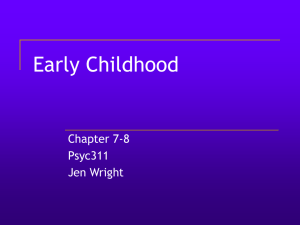

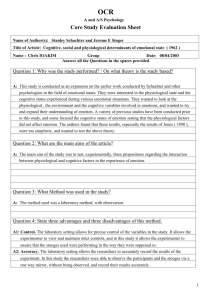
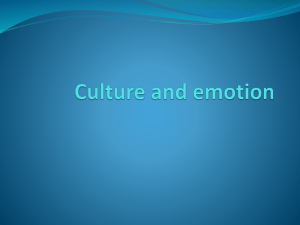



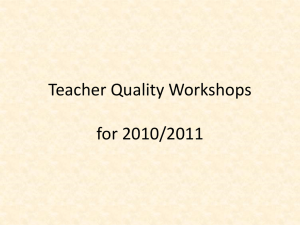
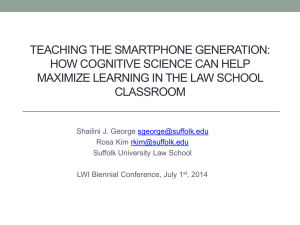


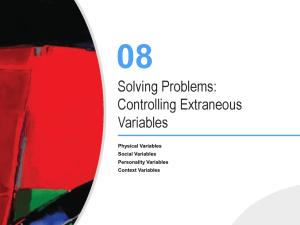
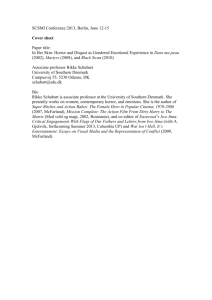
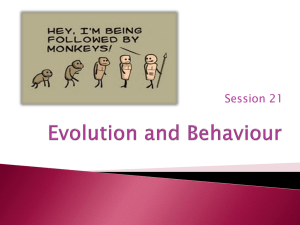
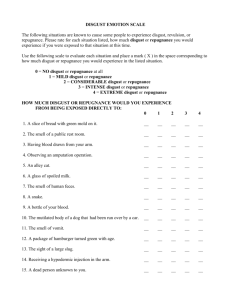
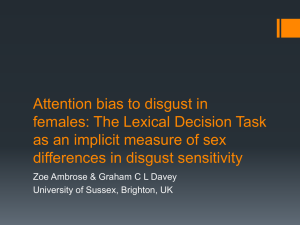
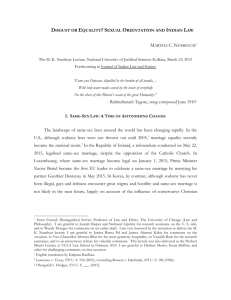
![This article was downloaded by: [Leshner, Glenn] On: 18 August 2009](http://s2.studylib.net/store/data/012160370_1-3d102880a9370305d636413eb068b0a8-300x300.png)
